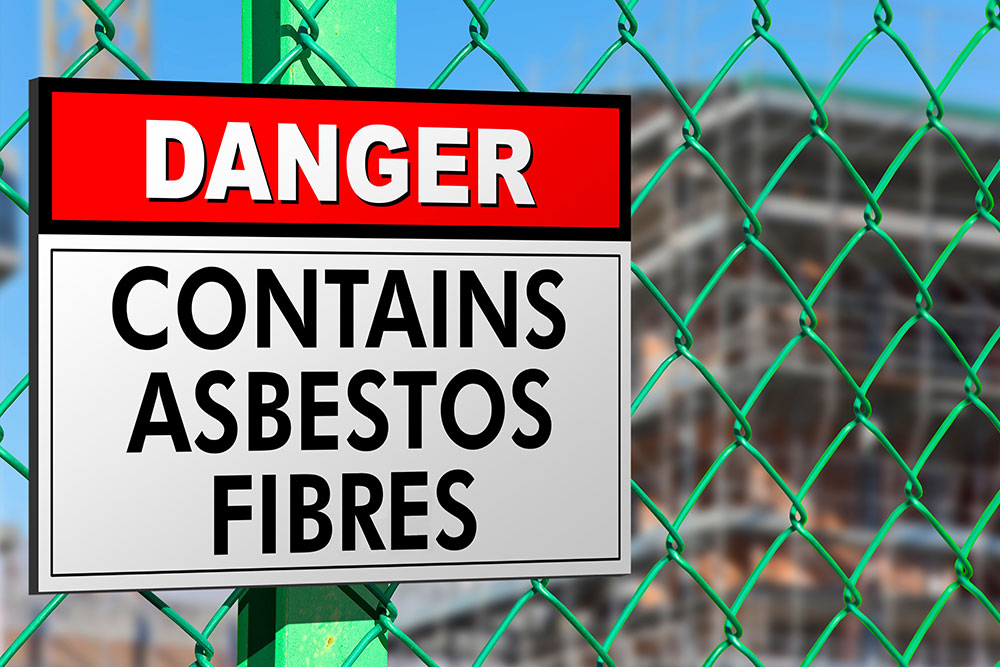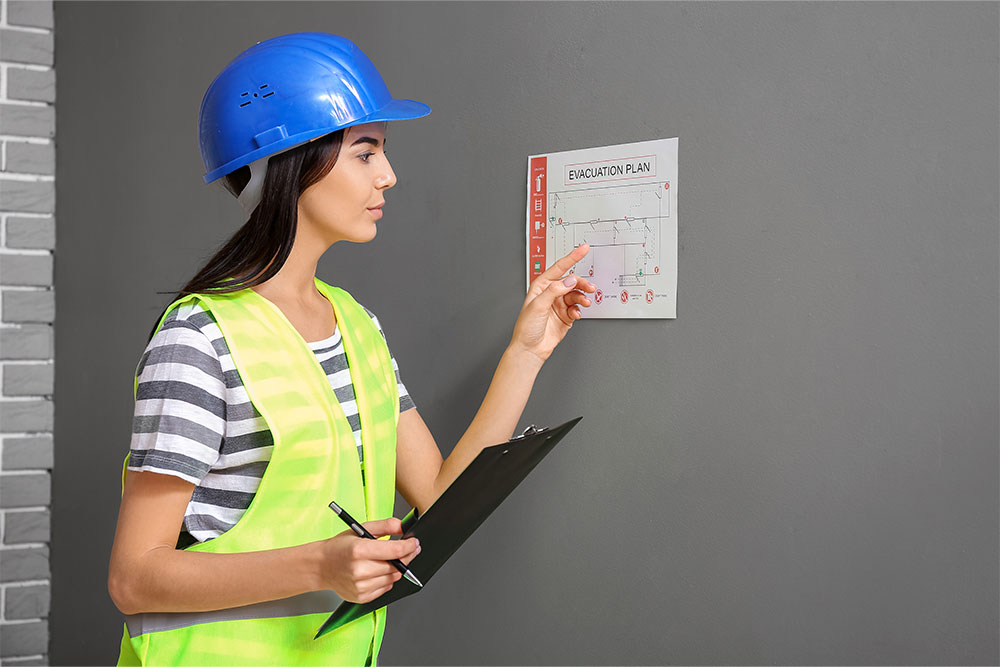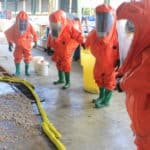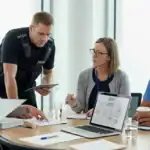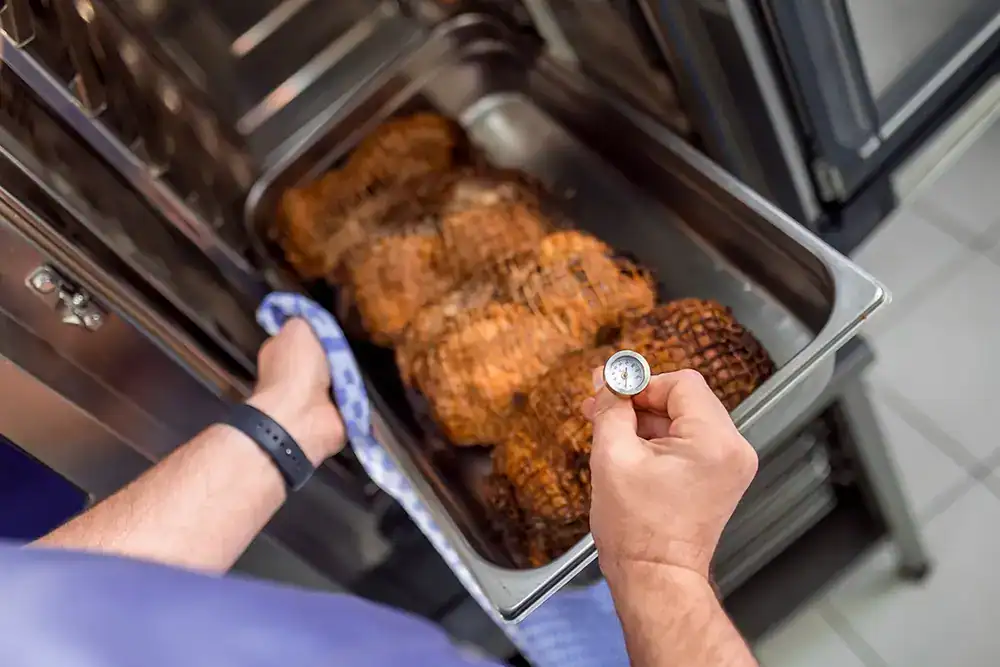
A Critical Control Point (CCP) is a stage in the food production process where specific control measures are applied to prevent food from becoming unsafe.
CCPs are part of the Hazard Analysis and Critical Control Points (HACCP) system, which every food business in the UK is legally required to follow.
If you work with food, this blog explains what CCPs are and how you’re expected to use them as part of your food safety system.
Key Takeaways
- A Critical Control Point (CCP) is a step in food production where you must apply control measures to prevent food from becoming unsafe.
- CCPs are part of HACCP (Hazard Analysis and Critical Control Point) systems. These food safety systems must be used by UK businesses.
- Common CCPs include cooking, chilling, packaging, preventing cross-contamination and preventing cross-contact of allergens.
- Each CCP has at least one critical limit (such as a minimum cooking temperature) that must be monitored, with corrective actions taken if the limit is not met.
What Is a Critical Control Point (CCP)?
A Critical Control Point is a step in the food production process where you can prevent, eliminate or reduce a hazard to a safe level.
For example, the cooking step is a CCP when preparing chicken.
If the meat doesn’t reach a high enough internal temperature, dangerous bacteria can survive. To control this hazard, food businesses must set a minimum cooking temperature and time for this CCP.
Food Hygiene Courses
Equip food workers with essential training for their role. Our online food hygiene courses provide an understanding of food safety, HACCP systems and cross-contamination. All courses award independently recognised certificates for proof of training.
How Does a CCP Fit into HACCP?
Hazard Analysis and Critical Control Point (HACCP) is a structured system designed to keep food safe by identifying hazards and controlling them at specific points in the production process.
CCPs are at the heart of this system. Once hazards are identified, CCPs mark the exact steps where you must act to prevent, remove or reduce them to safe levels.
What Types of Hazards Can Be Controlled by a CCP?
You design CCPs to control three main hazard types:
- Biological hazards – e.g. bacteria, viruses, parasites and moulds
- Chemical hazards – e.g. cleaning chemical residues, pesticides and allergens
- Physical hazards – e.g. glass fragments, plastic fragments and metal shavings
Although allergens are officially a chemical hazard, they’re widely treated as a fourth category.
Allergens pose severe risks, so they must be carefully controlled. Food workers are more likely to do this consistently when allergens are granted special status.
How Do You Identify a CCP?
Identifying a CCP starts with looking at each step in the production process and deciding where hazards could enter.
Two common methods are the HACCP decision tree and a detailed risk assessment.
Decision trees use a series of yes/no questions to determine if a step is a CCP
Risk assessments look at the type of hazard, the severity of harm it could cause and how likely it is to occur
What Are the Most Common Critical Control Points?
The exact Critical Control Points in a food business will vary depending on the products, processes and environment.
However, some CCPs are standard across many settings because they control the highest-risk hazards. These include:
- Cooking – heating food to a safe internal temperature to kill harmful bacteria
- Chilling – storing food at safe cold temperatures to slow or stop bacterial growth
- Cooling – bringing cooked food down to safe storage temperatures quickly
- Cross-contamination prevention – keeping raw and ready-to-eat foods separate, including equipment and surfaces
- Cross-contact prevention – preventing known allergens from coming into contact with other products
- Metal detection – screening finished products for physical contaminants such as metal fragments
What Is a “Critical Limit” For a CCP?
Critical limits are measurable safety boundaries that separate safe from unsafe conditions. They are based on scientific evidence, regulations and industry standards.
Each CCP has its own specific limit that must be met to keep food safe.
Cooking Processes
The critical limit for cooking is the minimum temperature and time needed to destroy harmful bacteria. For example, poultry must be cooked to an internal temperature of at least 75°C. Other foods have different safe temperatures based on their risk profile.
Chilling and Cold Storage
The critical limit for chilling is the maximum temperature allowed to prevent bacterial growth. Chilled foods should be stored at or below 5°C, while frozen products should be kept at -18°C.
Packaging and Sealing
For packaging, the critical limit is that seals must be fully intact with no gaps or damage. This ensures no contamination enters after packaging and the protective barrier remains effective.
Metal Detection
The critical limit is reached when the detector is calibrated to identify the smallest hazardous particles that could realistically contaminate food. If any metal is detected, the product must be automatically rejected.
Cross-Contact Prevention
Allergens present a unique food safety risk because even the smallest trace can trigger severe reactions. For this reason, the critical limit is zero: products that should be allergen-free must never come into contact with known allergens.
Cross-Contamination Prevention
The critical limit for preventing cross-contamination is strict separation of high-risk and ready-to-eat foods. This requires dedicated equipment, utensils and preparation areas to prevent bacteria or other hazards passing between products.

What Do You Do If a CCP Is Missed?
If a CCP isn’t properly monitored or controlled, the critical limit may be missed. In HACCP terms, this is called a deviation.
There are four steps for dealing with a deviation:
- Isolate the affected product – Hold back any food produced since the last safe check and prevent it from being served.
- Assess whether it can be made safe – In some cases, food can be reprocessed (for example, re-cooking undercooked meat). If this is not possible, the product must be discarded.
- Correct the problem – Fix the cause, whether that means adjusting equipment, retraining staff or tightening procedures.
- Record the incident – Keep a clear record of what went wrong, how it was corrected and what preventive measures were introduced.
This final step is about looking forward and working out how you can improve your food safety plan. What can you do to prevent the situation from repeating?
The Role of Training in Food Safety
Without proper training, controlling food safety risks is simply impossible for any food business.
In fact, the Food Standards Agency expects all food workers to have received suitable food safety training. This must cover hygiene, cross-contamination and HACCP.
Our online food hygiene and safety courses provide this essential knowledge and more. They explain best practices for handling, preparing, and serving food in different settings, and award workers industry-recognised training certificates for evidence of compliance.
Enrol today to give your team the skills to reduce the risks of foodborne illness and cross-contamination in your business.
